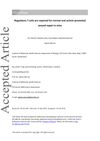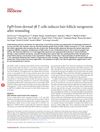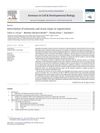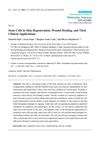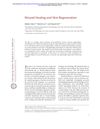Immune Cells in Cutaneous Wound Healing: A Review of Functional Data from Animal Models
February 2022
in “
International Journal of Molecular Sciences
”
cutaneous wound healing immune cells myeloid lineage cells platelets mast cells neutrophils macrophages lymphoid lineage cells T cells B cells innate lymphoid cells hemostasis growth factors wound re-epithelialization collagen synthesis vascular density scar formation infected wounds wound repair wound closure collagen deposition angiogenesis γδ T cells wound strength skin wound healing immune response blood cells blood clotting healing cells white blood cells healing process blood vessels scar tissue infection healing strength
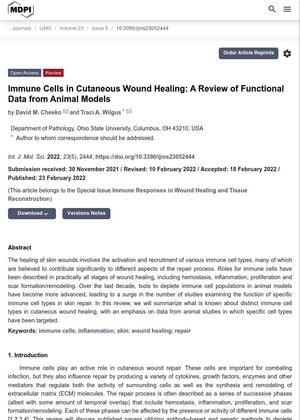
TLDR Different immune cells like platelets, mast cells, neutrophils, macrophages, T cells, B cells, and innate lymphoid cells all play roles in skin wound healing, but more research is needed due to inconsistent results and the complex nature of the immune response.
This review discusses the role of various immune cells in skin wound healing, based on animal studies. It focuses on myeloid lineage cells (platelets, mast cells, neutrophils, and macrophages) and lymphoid lineage cells (T cells, B cells, and innate lymphoid cells). Platelets initiate hemostasis and secrete growth factors but don't significantly affect wound re-epithelialization, collagen synthesis, or vascular density. Mast cells' role in wound healing and scar formation is inconsistent. Neutrophils are crucial in infected wounds but don't have significant positive effects on normal wound healing. Macrophages are essential for wound repair, with their depletion leading to delays in wound closure, reduced collagen deposition, and angiogenesis. T cells, particularly γδ T cells, play a significant role in wound healing, with their depletion leading to reduced wound strength and collagen deposition. B cells and innate lymphoid cells also contribute to wound healing. The review concludes that further research is needed due to inconsistent results and the complexity of the immune response to wound healing.
